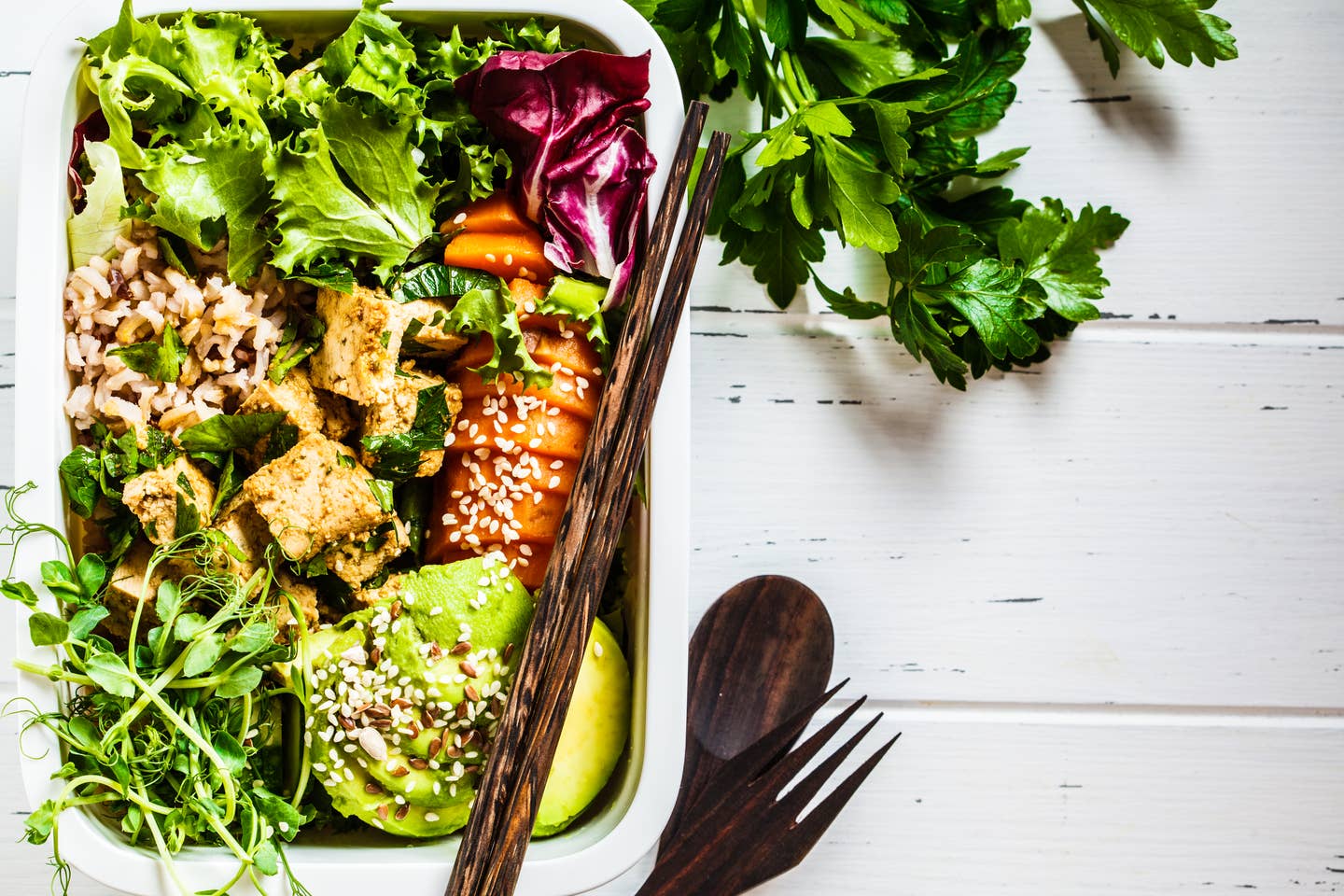
How to Start Eating a Whole Food, Plant-Based Diet
Is a whole food plant-based diet right for you?
It’s no secret that filling your plate with mostly whole foods is one of the healthiest ways to eat. In fact, whole foods and a plant-based diet fit pretty perfectly together, as both consist of eating foods in their most natural state. Whether you think your diet can use a little tweaking or you want to learn exactly how to do a more whole foods approach, here are the ins and outs of how to eat a whole food, plant-based diet.
What Is a Whole Food Diet?
First, this isn’t really a “diet.” As a matter of fact, there isn’t a true definition of a whole foods diet, but the main premise consists of choosing whole foods that are free of additives or processing. There’s no restriction or hard-set rules, no calorie or carb-cutting, and no weight loss guarantees. Instead, eating whole foods is a lifestyle that is meant to keep you healthy and help prevent disease.
A whole food, plant-based diet includes fruits, vegetables, beans, legumes, nuts, seeds, and whole grains. Packaged foods, like processed snacks, desserts, sugar-sweetened beverages, and anything with artificial additives don’t fit into this style of eating.
The Benefits of a Whole Foods Diet
Eating a whole foods plant-based diet has its perks. These foods are rich in nutrients, including vitamins, minerals, antioxidants, phytochemicals, fiber, protein, and healthy fats. And eating these nutrients has been directly linked with lower risks of diseases.
One research study published in Nutrition Diabetes examined how following a whole foods, plant-based diet affected obese adults, and found that doing so improved both body mass index and cholesterol levels over just a six month period.
In other words, you’ve got nothing to lose (except for maybe a few pounds) by choosing more plant-based whole foods.
Let’s take a closer look at each plant-based whole food group.
Fresh Fruits and Vegetables, Every Day
Consider the produce aisle the command center of a whole foods diet, as it’s filled with fresh fruits and vegetables straight from the ground.
But don’t discount frozen fruits and vegetables, which are usually flash-frozen right after being picked from the crop (and are preservative-free). The same is true for most canned fruits and vegetables, just check the label to ensure there is no added salt or sugar.
Dried fruits also fall into this category, as long as they don’t contain any added sugar (and avoid sulphur if possible). Last, pre-washed and pre-cut veggies are also additive-free and considered a whole food.
Even though fruits and vegetables seem like your safest bet, there are some traps to avoid. Snacks like fruit leather, fruit snacks, and veggie chips are loaded with many unwanted additives. And while corn is a whole food, corn flakes or corn pops are nothing but unnecessary sugar. When in doubt, skip the boxed stuff and stick with fruits and vegetables as close to its original source as possible.
Beans and Legumes, Whole Protein and Fiber
Beans and legumes are excellent whole food sources of protein, fiber, and often iron. There are countless varieties of beans, such as black beans, black-eyed peas, kidney beans, and white beans. As for legumes, lentils, chickpeas, peanuts, and soybeans are all whole food approved choices.
Some people who follow a whole foods plant-based diet only use raw beans and legumes, while others utilize the canned varieties. It comes down to personal preference, but keep in mind that canned beans and legumes are usually packaged with some salt, so you should rinse and drain them before eating. Canned beans can also expose you to a harmful chemical called bisphenol-A (BPA) or bisphenol-S (BPS). These chemicals have been linked to a number of health risks including metabolic disorders.
Nuts and Seeds, Whole Food Fats
Nuts and seeds are major sources of healthy fats in a plant-based diet. All nuts and seeds, such as walnuts, pistachios, almonds, Brazil nuts, macadamia nuts, pecans, chia seeds, sesame seeds, flax seeds, poppy seeds, and hemp seeds are great addition to a whole foods diet.
To keep these foods truly whole, opt for unseasoned varieties without added salt or sugar. Nut butters that are just ground nuts are fine, but avoid the ones that have other ingredients, like honey or other flavors – these can often be secret sugar bombs and a faux whole food source instead of the real deal.
Whole Grains
Grains can be deceptive because some are whole, while others are processed. Most cooking grains like barley, oats, brown rice, farro, spelt, quinoa, and even popcorn are whole foods.
To make sure you’re buying a whole grain, simply scan the label before you buy. Look for the Whole Grain stamp created by the Whole Grains Council that’s already on many foods in grocery stores or read the ingredients list and make sure the word “whole” is the first ingredient followed by whatever grain is in it. And don’t be fooled by terms like “enriched” or “wheat flour” which are not whole grain sources.
What About Wheat?
Whole wheat is technically a whole food, but it’s often used in processed cereals and breads. White bread and white rice have parts of the grains removed, so these are not considered whole foods. But when opting for whole wheat products, such as bread, be sure to read the labels for "whole grain wheat" or "whole wheat flour" to ensure you're getting a true wheat product.
You may also want to double-check anything promoted as "multi-grain." This can make food sound healthier than it is and even though it may contain "multi" grains, it may still be loaded with processed flours and sugar.
More From The Beet






